Set Theory Demystified
Functions, Mappings, and the Rich Tapestry of Finite and Infinite Sets
Preliminaries
0.0 Basic Set Operations
Modern analysis, like most other subfields of modern mathematics, is concerned with numbers, sets, and geometry. Here, set theory is not our focus. Almost every other branch of mathematics relies on the set theory as part of its foundation, so it’s important to get at least some grounding in set theory before doing other advanced areas of mathematics.
Definition: (Informal)
We define a set
This definition is intuitive enough, but it doesn’t answer a number of questions, such as which collections of objects are considered to be sets, which sets are equal to other sets, and how one defines operations on sets (e.g., unions, intersections, etc.). Also, we have no axioms yet on what sets do, or what their elements do. Obtaining these axioms and defining these operations will be the purpose of the remainder of this section. We first clarify one point: we consider sets themselves to be a type of object.
Axiom 0.1
If
Example: (informal) The set
Remark 1
There is a special case of set theory, called “pure set theory”, in which all objects are sets; for instance, the number
To summarize so far, among all the objects studied in mathematics, some of the objects happen to be set; and if
Next, we try to capture the notion of equality: when are two sets considered to be equal? We do not consider the order of the elements inside a set to be important; thus we think of
Axiom 0.2 (Equality of Sets)
Two sets A and B are equal,
Thus, for instance,
The “is an element of” relation
Next, we turn to the issue of exactly which objects are sets and which objects are not. The situation is analogous to how we defined the natural numbers in the previous chapter; we started with a single natural number,
Axiom 0.3(Empty set)
There exists a set
The empty set is also denoted
If a set is not equal to the empty set, we call it non-empty. The following statement is very simple, but worth stating nevertheless:
Lemma (Single choice): Let
Proof: We prove by contradiction. Suppose there does not exist any object
Remark 2
The above Lemma asserts that given any non-empty set
Note that the empty set is not necessarily the same thing as the natural number
If
Axiom 0.4(Singleton Sets and Pair sets)
If
Remarks 3
Just as there is only one empty set there is only one singleton set for each object
Example
Since
As the above examples show, we can now create quite a few sets; however, the sets we make are still fairly small (each set that we can build consists of no more than two elements, so far). The next axiom allows us to build somewhat larger sets than before.
Axiom 0.5 (Pairwise Union)
Given any two sets
or refers by default in mathematics to inclusive or: “
Examples: The set
Remark 4
If
Now, we will introduce other axioms of set theory which allow one to construct arbitrarily large, and even infinite sets.
Clearly, some sets seem to be larger than others. One way to formalize this concept is through the notion of a subset.
Subsets
Let
We say that
Remarks 5
Because these definitions involve only the notions of equality and the “is an element of” relation, both of which already obey the axiom of substitution, the notion of subset also automatically obeys the axiom of substitution. Thus for instance if
Examples: We have
The notion of subset in set theory is similar to the notion of “less than or equal to” for numbers, as the following proposition demonstrates
Proposition(Sets are partially ordered by set inclusion)
Let
Proof: We shall just prove the first claim. Suppose that
The subset relation and the union operation are related to each other. We now give an axiom which easily allows us to create subsets out of larger set.
Axiom 0.6(Axiom of Specification)
Let
This axiom is also known as the axiom of separation. Note that
Example: Let
We sometimes
We can use this axiom of specification to define some further operations on sets, namely intersections and difference sets.
Definitions
The intersection
In other words,
Note that this definition is well-defined. Because it is defined in terms of more primitive operations which were already known to obey the axiom of substitution.
Examples:
We have
By the way, one should be careful with the English word “and”: rather confusingly, it can mean either union or intersection, depending on context. For instance, if one talks about a set of “boys and girls”, one means the union of a set of boys with a set of girls, but if one talks about the set of people who are single and male, then one means the intersection of the set of single people with the set of male people. (Can you work out the rule of grammar that determines when “and” means union and when “and” means intersection?) Another problem is that “and” is also used in English to denote addition, thus for instance one could say that ”
Two sets
Definition (Difference sets)
Given two sets
For instance,
We now give some basic properties of unions, intersections, and difference sets.
Proposition (Sets Form a Boolean Algebra)
Let
(a) (Minimal element) We have
(b) (Maximal element) We have
(c) (Identity) We have
(d) (Commutativity) We have
(e) (Associativity) We have
(f) (Distributivity) We have
(g) (Partition) We have
(h) (De Morgan laws) We have,
Remark
The reader may observe a certain symmetry in the above laws between
We have now accumulated a number of axioms and results about sets, but there are still many things we are not able to do yet. One of the basic things we wish to do with a set is take each of the objects of that set, and somehow transform each such object into a new object; for instance we may wish to start with a set of numbers, say
Axiom 0.7(Replacement)
Let
Let
Example: Let
We often abbreviate a set of the form
as
In many of our examples we have implicitly assumed that natural numbers are in fact objects. Let us formalize this as follows.
Axiom 0.8(Infinity)
There exists a set
There’s an assumption which says that
This is the more formal version of the above assumptions. It is called the axiom of infinity because it introduces the most basic example of an infinite set, namely the set of natural numbers
One has to keep the concept of a set distinct from the elements of that set; for instance, the set
Example: This example requires the notion of subtraction, which has not yet been formally introduced. The following two sets are equal,
even though the expressions
Now it is easy to see
Formally, we can refer to
0.1 Relations
If
Thus
A binary relation on a set
Note:
A relation
We often draw diagram to indicate the cartesian product of two sets
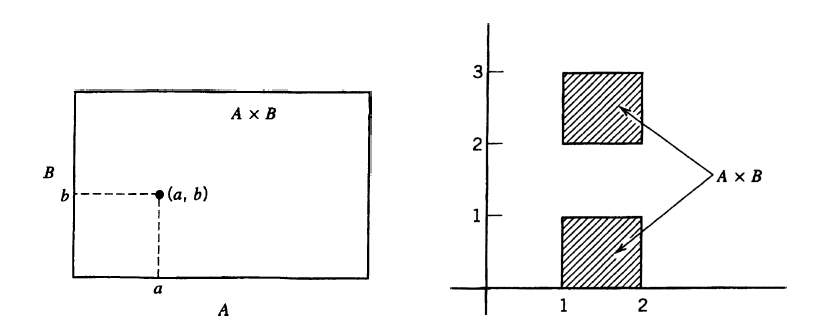
We will now discuss the fundamental notion of a function or a mapping.
Functions and Mappings
To the mathematician of the early
A function
But, However suggestive this revised definition be, there is a difficulty of interpreting the phrase “rule of correspondence”. In order to clarify this, we will express the definition entirely in terms of sets; in effect, we will define a function to be its graph.
Definition
Let
The set
The essential condition that:
is sometimes called the vertical line test. In geometrical terms, it says every vertical line
The notation
is often used to indicate that

Mapping and Its Visual Meaning
The notion of mapping (or function) is one of the most fundamental concepts in mathematics today. The intuitive concept of mapping is the following:
Let
The words map or mapping, transformation; correspondence and operator are among some of the many that are sometimes used as synonyms for function.
The symbol
“
Or,
“
If
In the map
The figure given below gives a convenient way of picturing the function
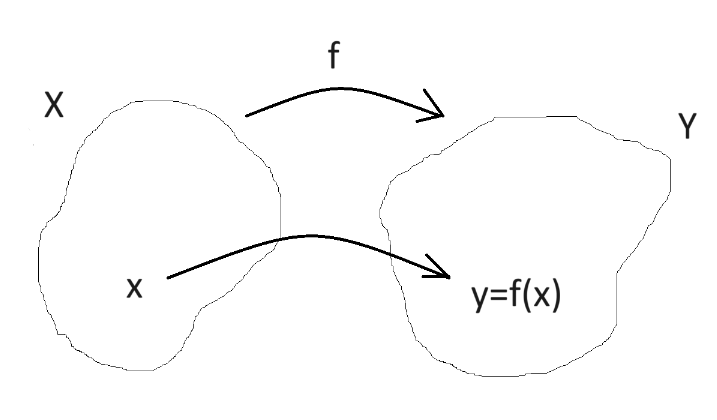
On the left
The mapping or funcction
- every element
- an element
i.e., two or more elements of
There may be also some elements in
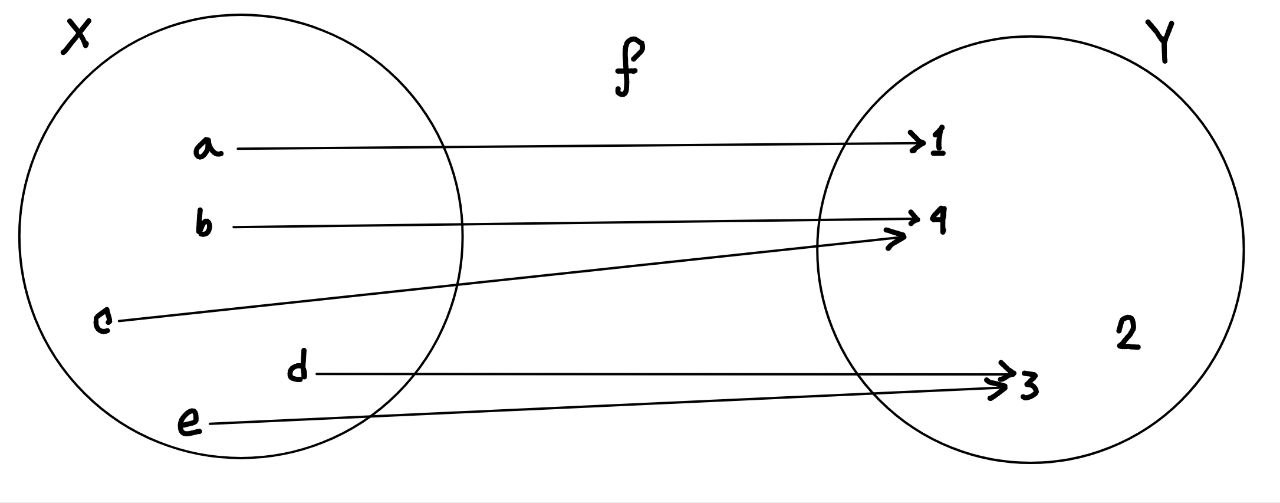
Note: A map
2) This correspondence describes a mappings, because it satisfies our intuitive concept required of a correspondence to be called a mapping.
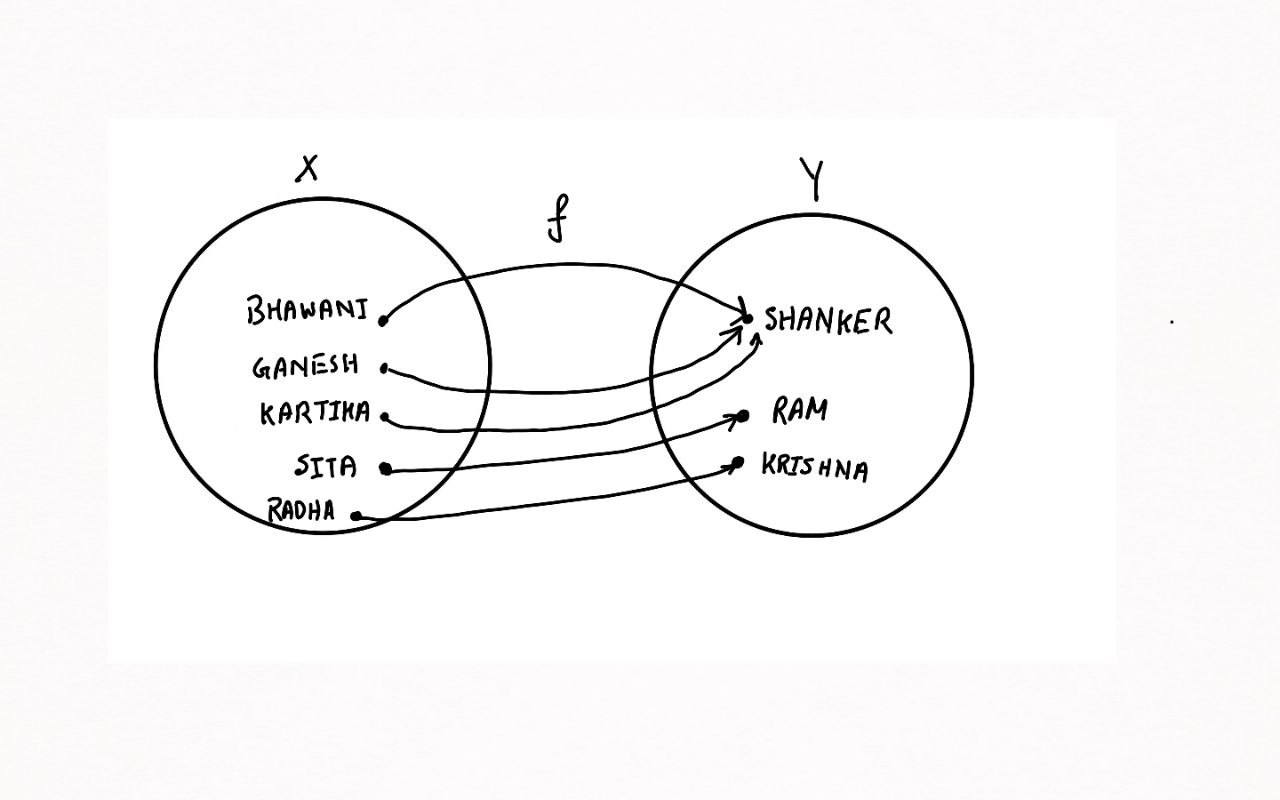
3) The following correspondance does not describe a mapping of the set
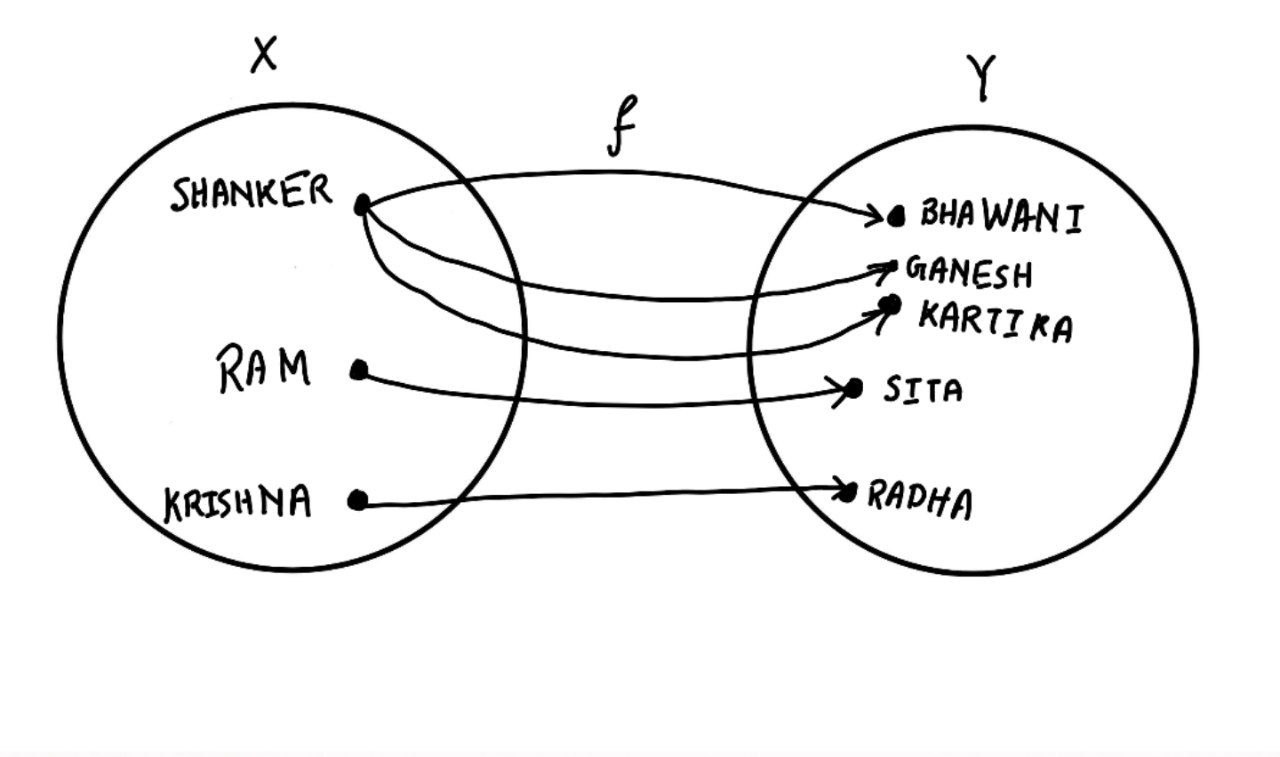
This is so because an element Shanker in
Transformation and Machines
Aside from using graphs, we can visualize a function as a transformation of the set
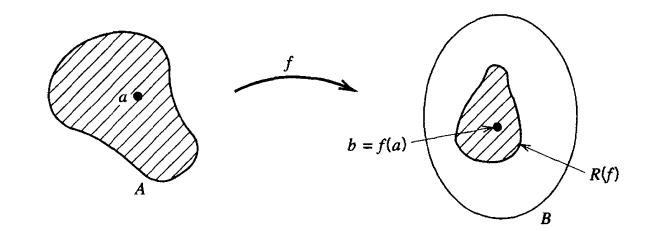
There is another way of visualizing a function: namely, as a machine that accepts elements

The last visualization makes the clear the distinction between